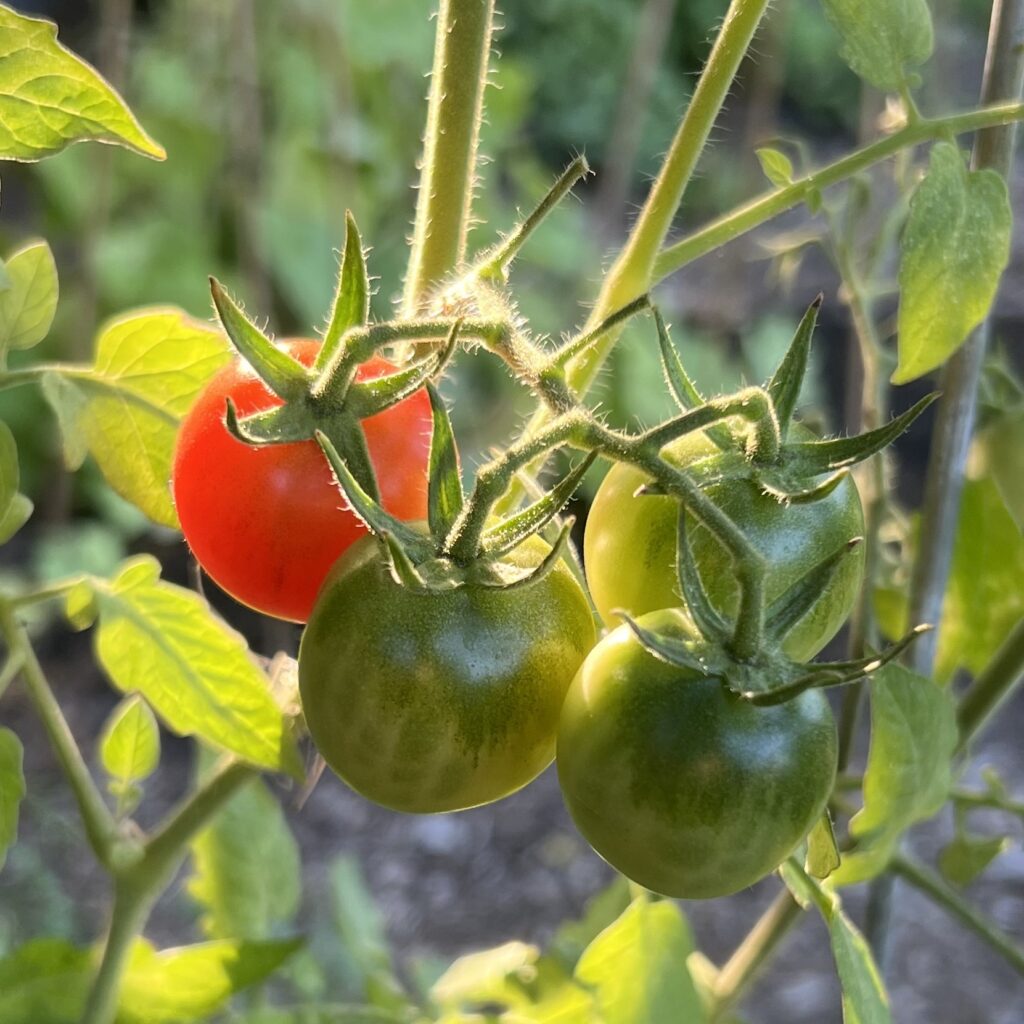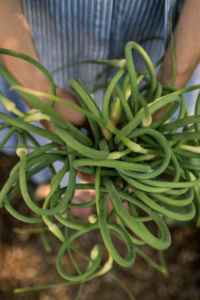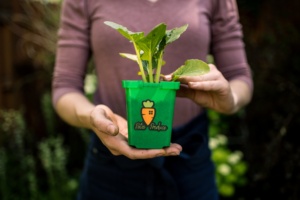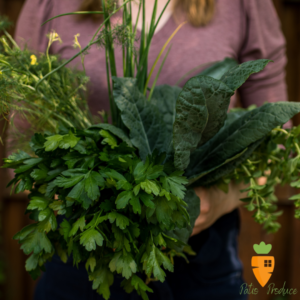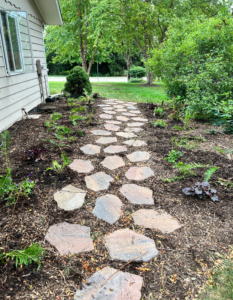When you think of vegetable gardening, what does your mind immediately jump to?
Growing tomatoes, if you’re like most Americans. Somewhere along the way we’ve gotten the image in our heads that no vegetable garden is complete without tomato plants.
And hey, if you’re going to grow veggies, tomatoes are a good choice. The difference in taste between store-bought and home-grown is astounding. There’s just nothing like eating that first tomato out of your garden each July that reminds you how incredible home-grown food can taste. Grocery store veggies seem so bland in comparison.
But my goodness are tomatoes difficult to grow. You may be thinking, “but Nicole! I grow tomatoes every year and they make it all the way to August or September before the plants turn brown and shrivel up!” But here’s the deal: tomato plants can make it all the way to frost before they die off. Just think of all the extra months of tomatoes you can harvest if you get your tomato plants to survive and thrive all the way to frost.
So yes, tomatoes are easy to grow in a sense. Anyone who plants one will likely get a tomato or two from the plant. But growing tomatoes well so you get exceptional harvests is a different game.
Here’s how to play:
The Basics
Make sure you plant your tomato plants in good, well-draining soil (not directly in our Midwest clay) in a very sunny location. Add compost for nutrients. Make sure you water.
 Manage the Disease
Manage the Disease
Notice I didn’t say “eliminate the disease.” This is where it gets tough. Tomato plants are little disease magnets. They will get diseases, and in the oddest ways imaginable. They can get diseases if it rains and soil splashes up on its leaves. Does it matter that the plant should be immune because its roots are already in the same soil? Nope. Disease. Tomatoes also get disease if the wind happens to blow diseased spores from another tomato plant (like your neighbor’s, planted a whole yard over, or several yards over) onto your plant. Instant disease. And tomatoes can get diseases generally if they’re too wet. If it rains for a long time. If it’s very humid for too long. Or if you water your tomato plant’s leaves instead of the roots. The number of ways tomatoes can get diseases is, quite frankly, ridiculous.
It can be discouraging to see the plant you lovingly tended for months slowly turn brown. The worst part is you can’t prevent the disease from happening. All you can do is to manage the disease once it’s on your plants.
 Here are three ways I manage my tomato plants’ diseases:
Here are three ways I manage my tomato plants’ diseases:
- Give your tomato plants a very tall structure to grow on. This will prevent the leaves of your tomatoes from having any contact with the soil, so they’ll stay healthier longer. Some tomato plants reach 9’ tall by the end of the season (mine usually do by Labor Day weekend), so plan for it in May when you plant.
- Remove all leaves that are not perfectly green. If a leaf has yellow, black, or brown spots? I remove it. What about spots that are tiny, or big spots? Gone. What if the whole leaf turns yellow? Nope. Anything other than bright green, healthy leaves are removed each week. Now, you could fall down the rabbit hole of trying to figure out what diseases your tomato plants have and why they got them in the first place. You’ll come across terms like early blight, late blight, and southern blight, grey leaf spot, septoria leaf spot, and bacterial speck. And some cold, winter day you might want to make a cup of tea, snuggle up by the fire, and read about tomato diseases. But you don’t have time for that in the middle of the growing season. So if it’s not perfectly green, remove it and move on.
- Do not touch your tomato plants when they are wet. For some (very inconvenient) reason, disease spreads like wildfire on your tomato plants when they are wet. So if you want to harvest some tomatoes in the morning before work but the dew hasn’t dried on your tomato plants yet, leave them be.
Most people don’t grow tomatoes well and get a small harvest from disease-ridden plants that give up in August. But you’re not most people. If you give your tomatoes proper growing conditions and stay on top of the disease, you’ll be harvesting tomatoes up until first frost. Then you can spend your winter dreaming of that first ripe tomato next July.
